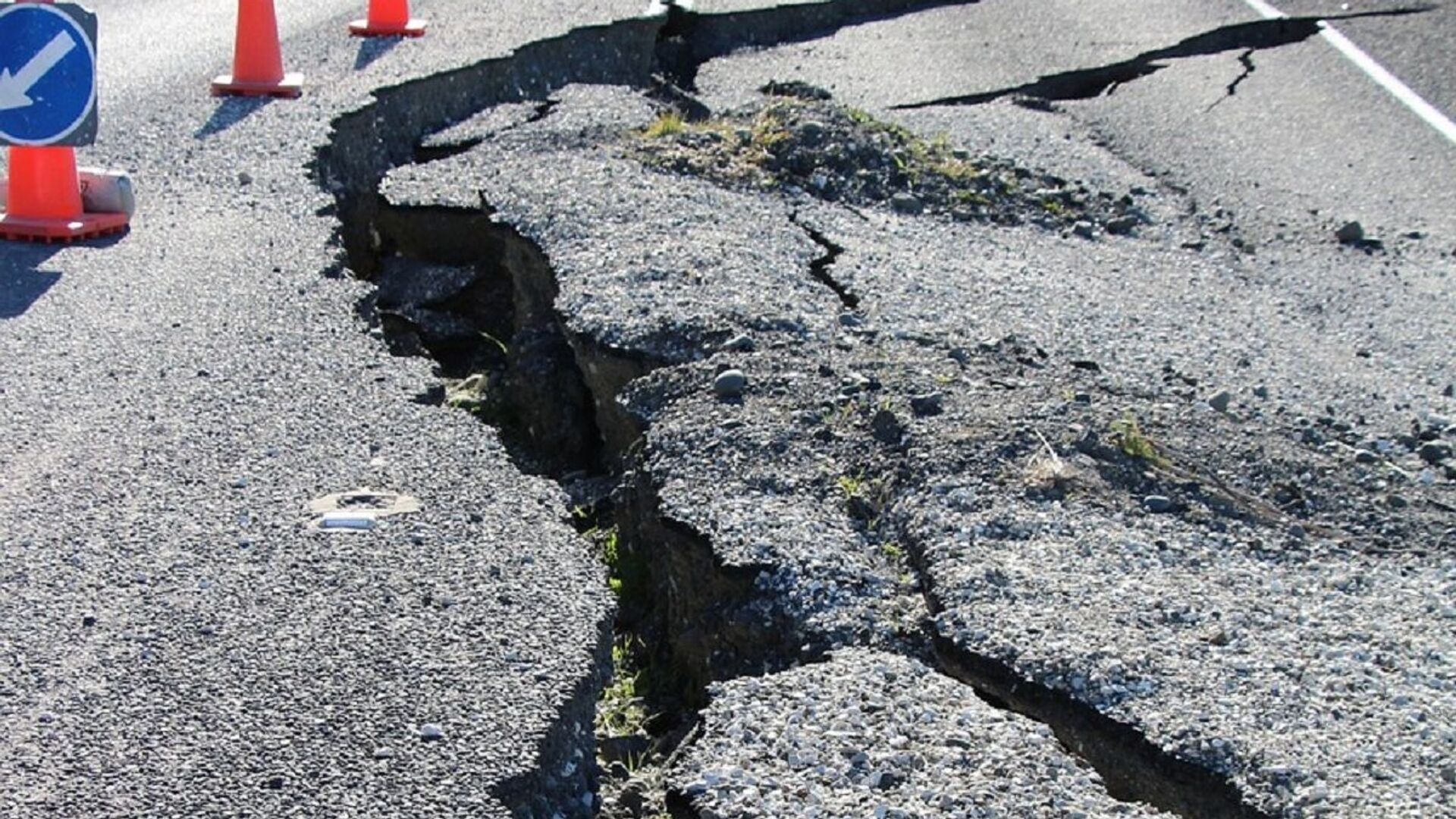https://sputnikglobe.com/20240304/geologists-reveal-possible-cause-of-deep-earthquakes-beneath-the-mediterranean-1117106600.html
Geologists Reveal Possible Cause of Deep Earthquakes Beneath the Mediterranean
Geologists Reveal Possible Cause of Deep Earthquakes Beneath the Mediterranean
Sputnik International
Geologists attribute deep-focus earthquakes underneath the Mediterranean to the formation of a soft mineral compound (hydrous magnesium silicate) on tectonic slabs as they descend into ocean water. This process causes dehydration and brittleness, making the plates prone to seismic activity.
2024-03-04T13:14+0000
2024-03-04T13:14+0000
2024-03-04T13:14+0000
beyond politics
science & tech
society
earth
spain
granada
australian national university
https://cdn1.img.sputnikglobe.com/img/07e4/0a/1e/1080928854_0:395:1200:1070_1920x0_80_0_0_f644f8c13631f22523351c5c16f25058.jpg
The gradual collision of Africa and Eurasia has triggered seismic activity, revealing a portion of the Earth's surface overturned and submerged beneath the Mediterranean.Spain's Mediterranean coast is subject to periodic and intense earthquakes, with a recent study suggesting a potential link to the upturned tectonic plate. The study was published in The Seismic Record.As tectonic plates collide, it causes one plate to slip beneath the other in a process called subduction. This collision sometimes destroys the descending plate, causing the crust to form mountains, ultimately binding the two plates. On other occasions, the slabs can be separate but stacked, with one slowly dipping into the Earth's mantle.As the sinking slab descends into ocean water, it forms hydrous magnesium silicates in its top layers, which dry out and becomes fragile, making it vulnerable to seismic activity. The prolonged seismic waves of the 2010 Granada earthquake may be due to slower movement at the bottom of the Alboran slab.The slab's rapid plunge caused this section of Earth's crust to flip, pulling a pocket of water with it, as gravity made it rotate vertically downward. According to the study, the slab has fully overturned, landing with its silicate side down, explaining the peculiar complexity of the region's tectonic formations and sporadic earthquakes more than 600 kilometers deep.The research team found that the tectonic slab beneath the Betics of southern Spain "is a subducted oceanic lithosphere," describing the formation of the Beltic-Rif or Gibraltar arc, shaping the western Mediterranean.
https://sputnikglobe.com/20240101/japan-records-total-of-29-earthquakes-in-2-hours-1115930703.html
earth
spain
granada
Sputnik International
feedback@sputniknews.com
+74956456601
MIA „Rossiya Segodnya“
2024
Chimauchem Nwosu
https://cdn1.img.sputnikglobe.com/img/07e7/09/01/1113046371_0:99:1536:1635_100x100_80_0_0_9c5c627283eca931c39fe4852bbb301c.jpg
Chimauchem Nwosu
https://cdn1.img.sputnikglobe.com/img/07e7/09/01/1113046371_0:99:1536:1635_100x100_80_0_0_9c5c627283eca931c39fe4852bbb301c.jpg
News
en_EN
Sputnik International
feedback@sputniknews.com
+74956456601
MIA „Rossiya Segodnya“
Sputnik International
feedback@sputniknews.com
+74956456601
MIA „Rossiya Segodnya“
Chimauchem Nwosu
https://cdn1.img.sputnikglobe.com/img/07e7/09/01/1113046371_0:99:1536:1635_100x100_80_0_0_9c5c627283eca931c39fe4852bbb301c.jpg
seismic activity, tectonic plate, earthquakes, granada, tectonic slabs, alboran slab, mediterranean, mantle transition zone, subduction, subduction speed, western mediterranean, earth's crust, beltic-rif arc, gibraltar arc, tectonic formations.
seismic activity, tectonic plate, earthquakes, granada, tectonic slabs, alboran slab, mediterranean, mantle transition zone, subduction, subduction speed, western mediterranean, earth's crust, beltic-rif arc, gibraltar arc, tectonic formations.
Geologists Reveal Possible Cause of Deep Earthquakes Beneath the Mediterranean
Geologists attribute deep-focus earthquakes underneath the Mediterranean to the formation of a soft mineral compound — hydrous magnesium silicate — on tectonic slabs as they descend into ocean water. This process causes dehydration and brittleness, making the plates prone to seismic activity.
The gradual collision of Africa and Eurasia has triggered seismic activity, revealing a portion of the Earth's surface overturned and submerged beneath the Mediterranean.
Spain's Mediterranean coast is subject to periodic and
intense earthquakes, with a recent study suggesting a potential link to the upturned tectonic plate. The study was published in
The Seismic Record.
As tectonic plates collide, it causes one plate to slip beneath the other in a process called subduction. This collision sometimes destroys the descending plate, causing the crust to form mountains, ultimately binding the two plates. On other occasions, the slabs can be separate but stacked, with one slowly dipping into the Earth's mantle.

1 January 2024, 12:50 GMT
As the sinking slab descends into ocean water, it forms hydrous magnesium silicates in its top layers, which dry out and becomes fragile, making it vulnerable to seismic activity. The
prolonged seismic waves of the 2010 Granada earthquake may be due to slower movement at the bottom of the Alboran slab.
"A significant amount of water has been carried down to the mantle transition zone, indicating a relatively cold slab," said Daoyuan Sun, co-author of the study and geologist from the University of Science and Technology of China. "Considering a relatively young seafloor age in the western Mediterranean, for the slab to remain cool, the subduction speed must be quite fast, such as a moderate speed of about 70 millimeters per year.”
The slab's rapid plunge caused this section of Earth's crust to flip, pulling a pocket of water with it, as gravity made it rotate vertically downward. According to the study, the slab has fully overturned, landing with its silicate side down, explaining the peculiar complexity of the region's tectonic formations and sporadic earthquakes more than 600 kilometers deep.
The research team found that the tectonic slab beneath the Betics of southern Spain "is a subducted oceanic lithosphere," describing the formation of the Beltic-Rif or Gibraltar arc, shaping the western Mediterranean.




